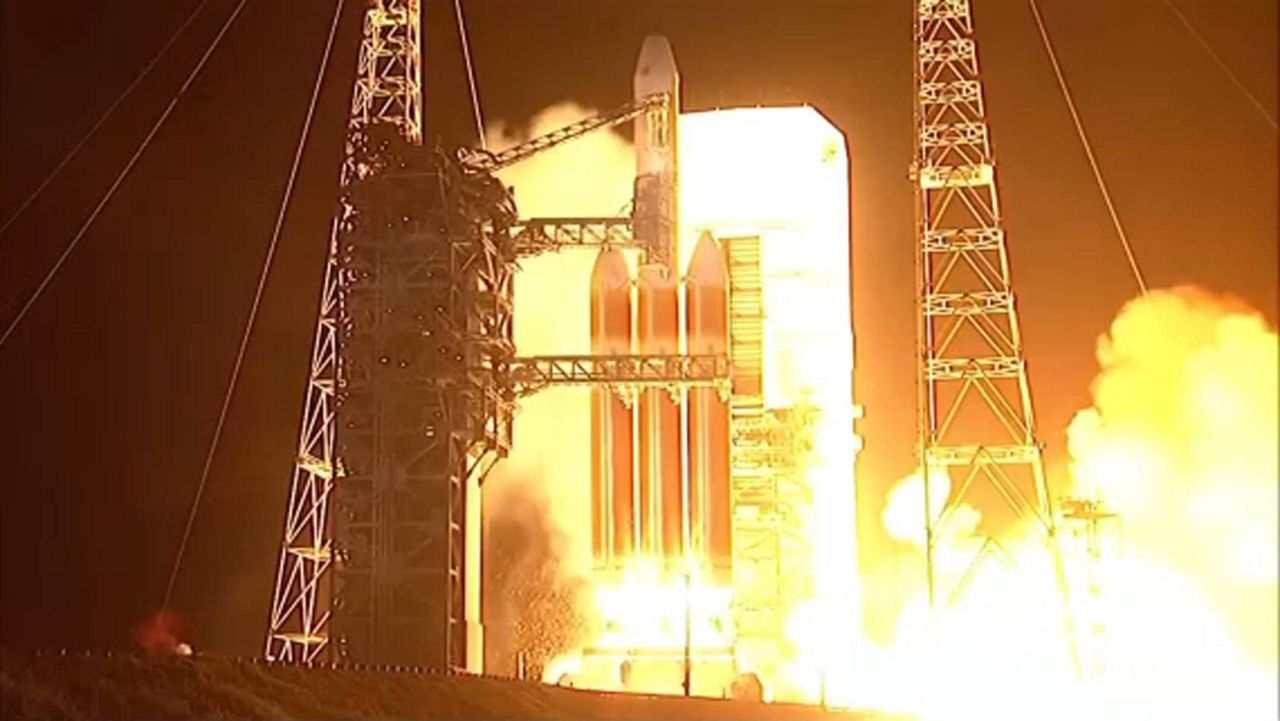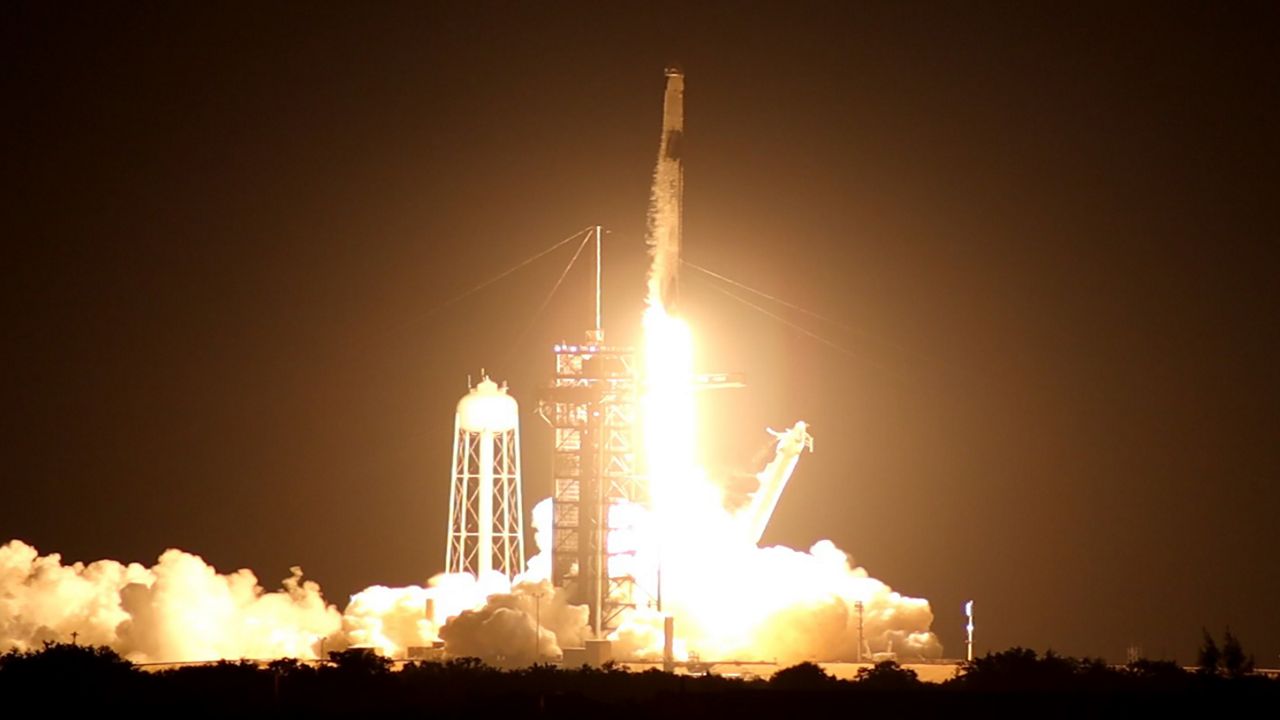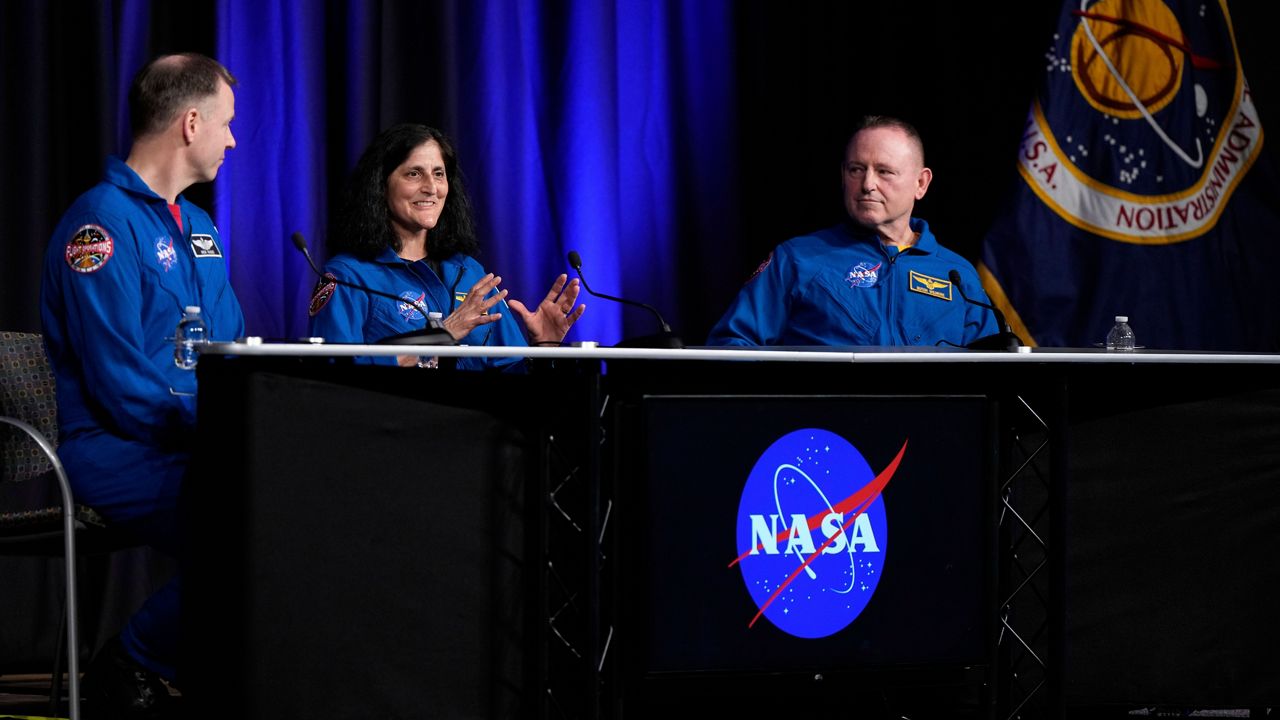CAPE CANAVERAL SPACE FORCE STATION — Despite two delays due to weather and a valve issue, the United Launch Alliance was able to launch its Delta IV Heavy rocket early Thursday morning for a classified mission.
What You Need To Know
- This is the second-to-last launch of a Delta IV Heavy
- RELATED: ULA’s Delta IV Heavy rocket nears end of 20-year run with penultimate launch
- Get more space coverage here
- 🔻Scroll down to watch the launch🔻
The 235-foot-tall Delta IV Heavy rocket lifted off from Space Launch Complex-37 at the Cape Canaveral Space Force Station at 5:18 a.m. ET.
The roar and the vibrations of the rocket could be felt as far away as Orlando.
The launch saw some delays
The NROL-68 mission saw some delays. It was originally to launch at 3:29 a.m., Wednesday, June 21, but ULA issued an unplanned hold before 1:20 a.m. ET, the company stated.
The delay was caused by an issue with a ground systems pneumatic valve, stated ULA in a tweet.
The launch of a ULA #DeltaIVHeavy carrying the #NROL68 mission for the @NatReconOfc is delayed due to an issue with a ground systems pneumatic valve. The launch is now planned for Thur., June 22 at 3:25 a.m. EDT. https://t.co/jIsovi8hd3
— ULA (@ulalaunch) June 21, 2023
Spectrum News reached out to ULA to explain what a ground systems pneumatic valve does. While ULA did not reply back, the basic idea of the valve is to control the flow of the fuel — in this case the 470,000 gallons of liquid hydrogen and liquid oxygen that the Delta IV Heavy uses — into the rocket, according to a paper on the subject on NASA’s website.
“These valves are used to control the flow of propellant, so failures may have a significant impact on launch availability. Therefore, correctly predicting when valves will fail enables timely maintenance that avoids launch delays and aborts,” stated the paper.
This forced ULA to push back the launch by one day, but at around 12:36 a.m. ET, Thursday, ULA stated that it was pushing back its launch from 3:25 a.m. ET. to 5:10 a.m. ET due to “weather delays postponing the rollback of the mobile service tower,” the company stated
Then it was pushed back to 5:18 a.m. ET.
Now one hour away from liftoff of #NROL68 at 5:18amEDT (0918 UTC). We are tracking no issues in the countdown. #DeltaIVHeavy is fueled and its 8 cryogenic tanks are being conditioned for launch. pic.twitter.com/GVbxCRXCQw
— ULA (@ulalaunch) June 22, 2023
The 45th Weather Squadron Launch Team had predicted a 75% chance of good liftoff conditions for Wednesday's mission, with the only concerns being ground winds and anvil cloud and cumulus cloud rules.
But it also gave a 24-hour delay prediction, where the liftoff conditions improved to 80%, with the concerns being ground winds and an anvil cloud rule. On Wednesday afternoon, ULA stated the forecast is 75% good for liftoff.
Unlike SpaceX rockets, ULA’s Delta IV Heavy rocket does not land.
Heavy Fun Facts 📝
— ULA (@ulalaunch) June 20, 2023
Height of #DeltaIVHeavy: 235 feet (71.6 meters)
Fuel onboard: 470,000 gallons of liquid hydrogen and liquid oxygen
Mass at liftoff: 1.6 million pounds (725,750 kg)
Thrust at liftoff: 2.1 million pounds (9.4 mega-Newtons)https://t.co/jIsovi7Jnv pic.twitter.com/iQtTeDiiFj
Understanding the mission
Not much is known about the classified NROL-68 (National Reconnaissance Office Launch) mission for the National Reconnaissance Office. Neither ULA nor NRO revealed what the classified payload is.
Through its website, NRO describes what some of its objectives are.
“For more than sixty years, the NRO has developed, acquired, launched and operated the satellites that are the foundation for America’s advantage and strength in space,” it stated.
In a press release from Space Systems Command, Maj. Gen. Stephen Purdy said that the launch is currently on schedule and that it is important to the country’s national security.
“Everything’s looking great and we’re on track to launch another vitally important national security capability into space,” said Purdy, the program executive officer for Assured Access to Space, a branch of the Space Systems Command.
The last time the rocket lifted off from the Sunshine State was in December 2020 for the classified NROL-44 mission.
What is known is that this is the next-to-last launch of a ULA Delta IV Heavy, with the last launch anticipated to be at Cape Canaveral Space Force Station next year for the classified NROL-70 mission.
ULA plans to replace the Delta IV Heavy with its Vulcan Centaur rocket.








